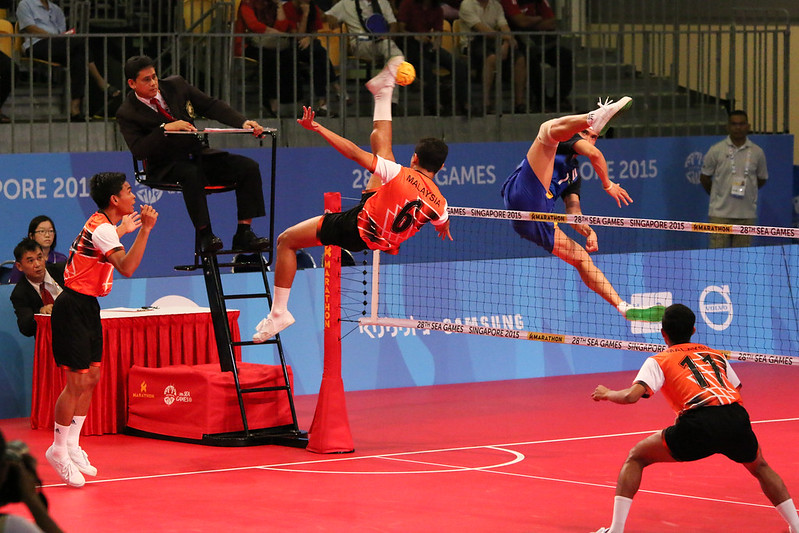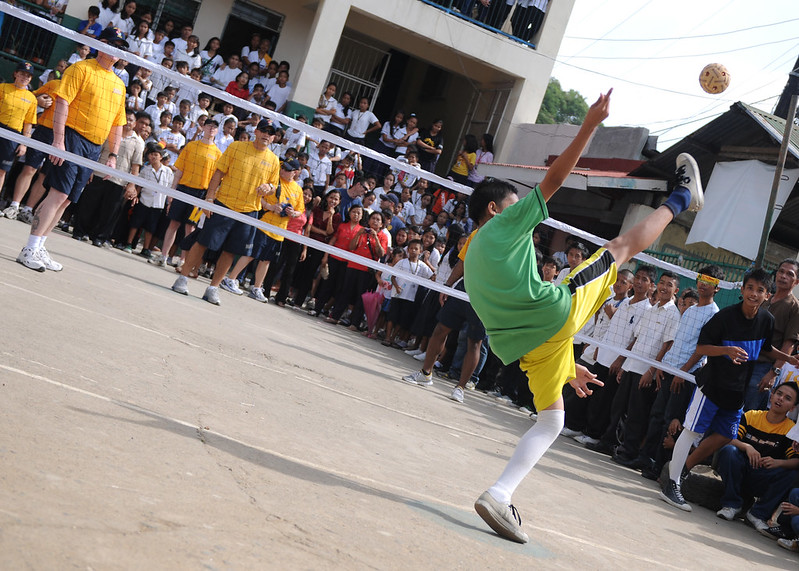The Thrilling World of Sepak Takraw: A Deep Dive into the Sport
Sepak Takraw, a sport that combines the agility of soccer with the strategic play of volleyball, has captured the hearts of many in Southeast Asia, particularly in the Philippines.
Known for its high-flying kicks and acrobatic maneuvers, Sepak Takraw is not just a game but a cultural phenomenon.
Let’s explore the rich history, rules, techniques, and the growing popularity of this fascinating sport.

A Brief History of Sepak Takraw
Sepak Takraw has deep roots in Southeast Asia, with historical records dating back to the 15th century. The game was initially played in the royal courts of Malaysia and later spread to neighboring countries like Thailand, Indonesia, and the Philippines.
The modern version of Sepak Takraw was standardized in 1960 when officials from Malaysia, Singapore, Thailand, and Myanmar met in Kuala Lumpur to agree on a name and set of rules for the sport.
In the Philippines, Sepak Takraw is known as “sipa,” which means “kick” in Tagalog.
The sport has been a part of Filipino culture for centuries and is included in the elementary and high school curriculum.
The Philippines has a rich history in Sepak Takraw, with the national team achieving significant success in international competitions, including a bronze medal at the 2023 Asian Games.

Understanding the Game: Rules and Regulations
Sepak Takraw is played on a court similar to a badminton court, with a net in the middle. Each team, known as a “regu,” consists of three players: the server (Tekong), the feeder, and the striker.
The objective is to hit the ball over the net and onto the floor of the opponent’s court using only the feet, head, knees, and chest.
Key Rules of Sepak Takraw
- Scoring: A game is won by the first team to win two sets. Each set is played to 21 points, but a team must win by at least two points. If the score reaches 20-20, the set continues until one team leads by two points, up to a maximum of 25 points. In the event of a tie after two sets, a third set, called the “tie-break,” is played to 15 points, with the same two-point lead rule applying.
- Service: The game begins with a coin toss to decide which team serves first. The server must keep one foot in the service circle and kick the ball over the net with the other foot. The feeder tosses the ball to the server, who then kicks it over the net.
- Faults: Points are scored when the opposing team commits a fault. Faults include letting the ball touch the ground, failing to return the ball over the net within three touches, or using hands or arms to touch the ball.
- Player Positions: Each player has a specific role. The Tekong serves the ball, the feeder sets up the ball for the striker, and the striker attempts to score points by hitting the ball into the opponent’s court.
Techniques and Skills in Sepak Takraw
Sepak Takraw requires a unique set of skills, combining agility, flexibility, and strength. Players must master various kicks, spikes, and serves to excel in the game. Here are some of the essential techniques:
Basic Kicks
- Inside Kick: The most common kick used to control the ball. Players hit the ball with the inside of their foot while standing with feet apart and bending the supporting leg slightly.
- Outside Kick: A defensive kick that propels the ball upwards. The player bends the knee inward and makes contact with the outside of the foot.
- Knee Kick: Utilizes the thigh just above the knee to hit the ball. This kick is often used to receive serves.
- Header: Similar to a football header, this technique uses the forehead to hit the ball, especially when it is too high for a kick.
Advanced Techniques
- Horse Kick Serve: A high kick that requires flexibility. The player kicks the ball backward over their shoulder or head.
- Sunback Spike: Similar to the horse kick but performed in a jump. The player jumps on one leg and kicks the ball over their shoulder or head with the other leg.
- Roll Spike: One of the most challenging and stylish shots. The player jumps and flips in the direction they want the ball to go, kicking it over the opposite shoulder while airborne.
The Growing Popularity of Sepak Takraw in the Philippines

Sepak Takraw has seen a surge in popularity in the Philippines, thanks to its inclusion in school curriculums and the success of the national team in international competitions.
The sport is not only a competitive game but also a cultural activity that brings communities together.
Community and School Involvement
In the Philippines, Sepak Takraw is played in schools, community centers, and local tournaments.
The sport is a staple in physical education programs, teaching students the importance of teamwork, agility, and strategic thinking.
Community tournaments, like the Palawan Sepak Takraw Invitational Tournament, provide a platform for enthusiasts to showcase their skills and foster a sense of camaraderie.
International Success
The Philippines has made significant strides in the international Sepak Takraw scene. The national team’s bronze medal at the 2023 Asian Games marked a historic achievement, ending a 33-year medal drought in the sport.
This success has inspired a new generation of players and increased interest in Sepak Takraw across the country.
Conclusion
Sepak Takraw is more than just a sport; it is a cultural phenomenon that embodies the spirit and agility of Southeast Asia.
In the Philippines, the game continues to grow in popularity, bringing communities together and inspiring young athletes.
Whether you’re a seasoned player or a curious newcomer, Sepak Takraw offers an exciting and dynamic experience that is sure to captivate and challenge you.




Your comment is awaiting moderation.
Thanks for the article.Thanks Again. Awesome.